Brian Baker has been in Newport every day this week working on his return to the ATP tour with coach Todd Martin, who is a touring pro at a local club. Baker has been hitting on the public courts across the street from the Hall of Fame, where the courts are available to any player, on any level on a “first come first serve basis” as Martin told me. Baker is planning on playing next week’s Atlanta event, his first tournament since injuring his knee at this year’s Australian Open in a match against Sam Querrey.

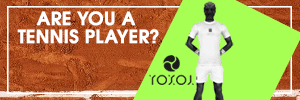

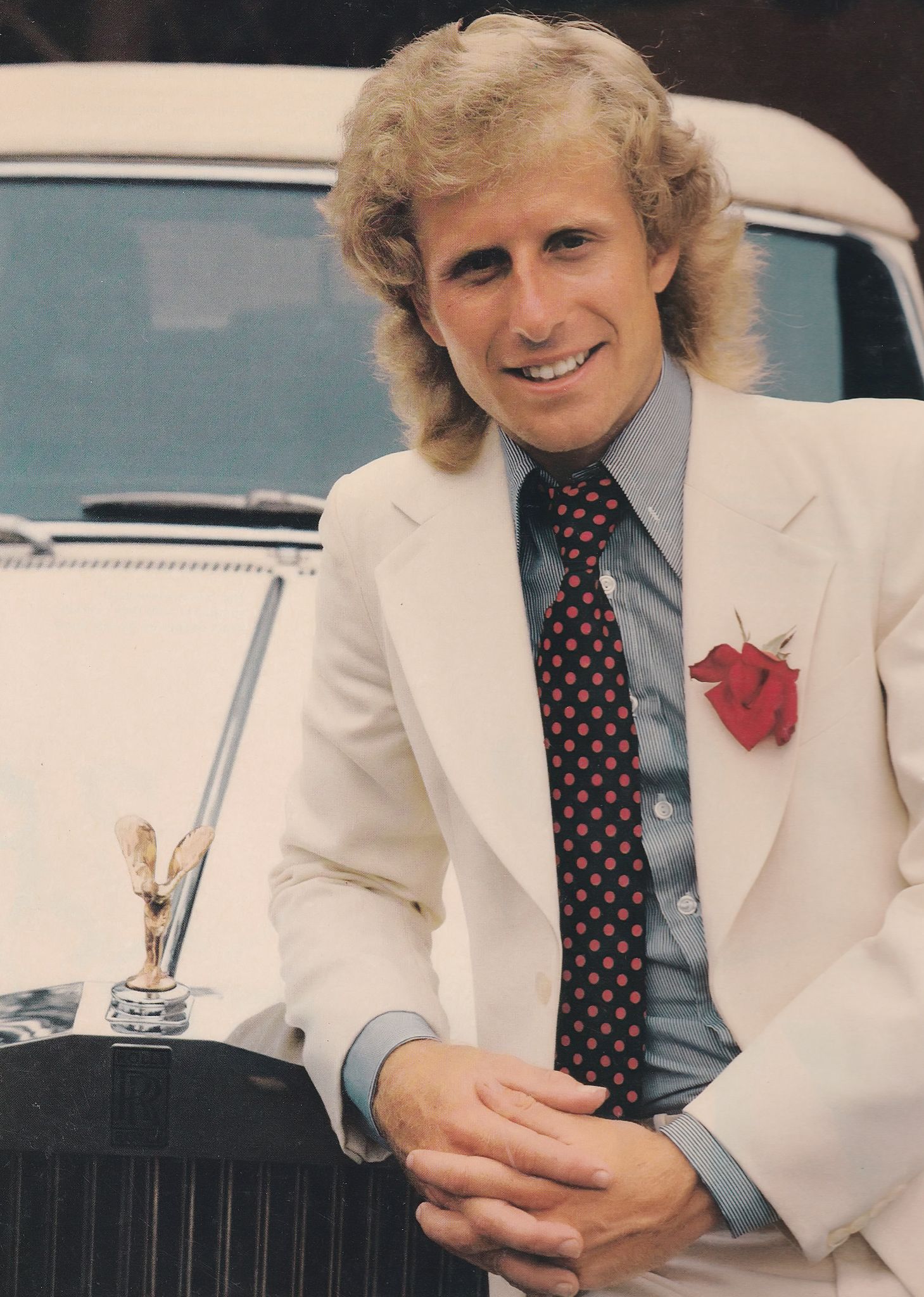
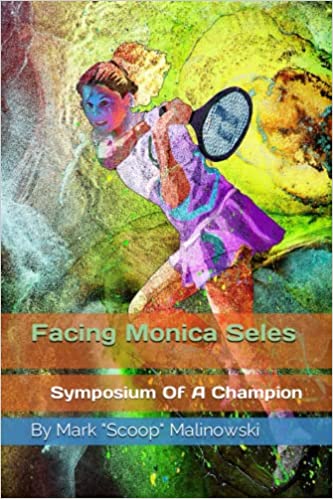
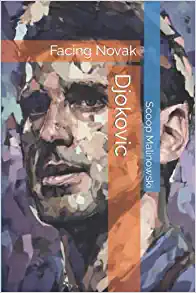
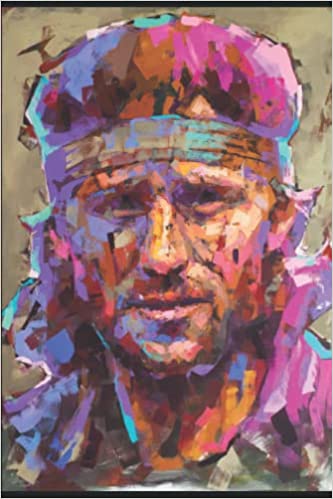
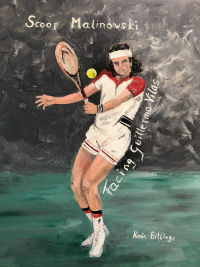
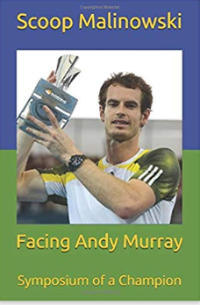
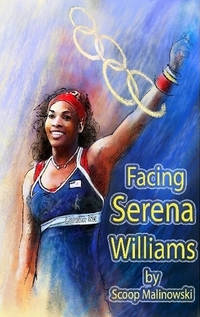
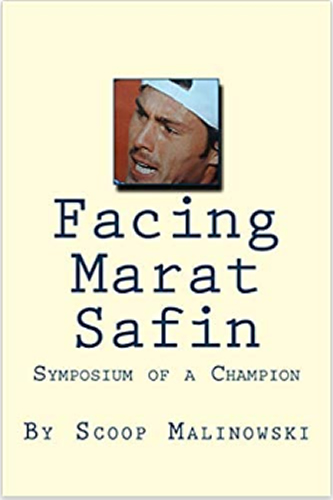
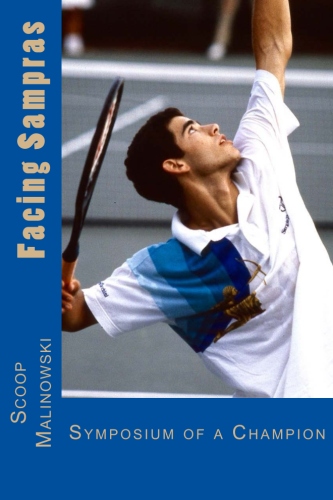
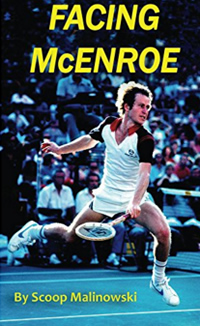
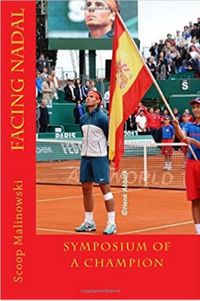
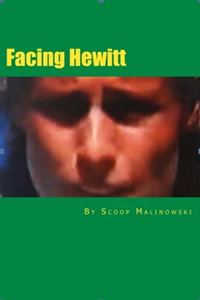
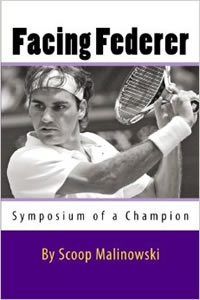
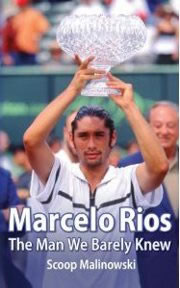

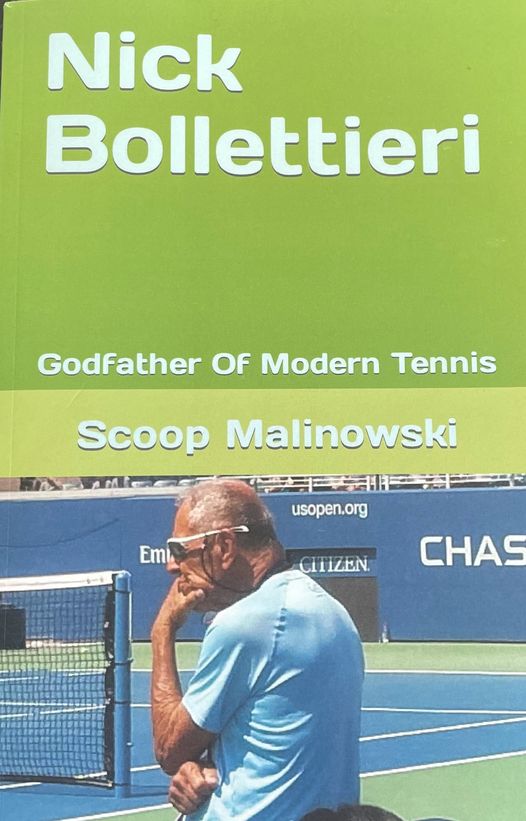
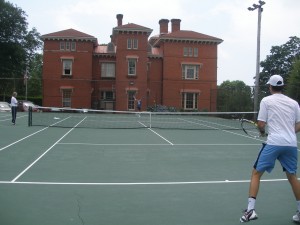
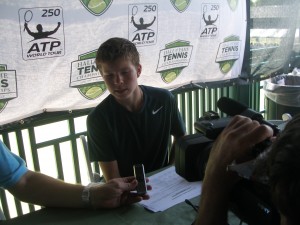
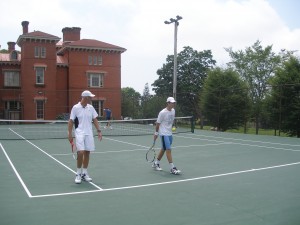
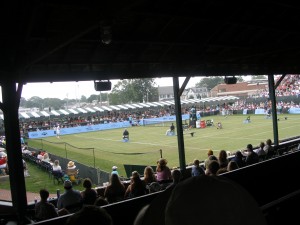
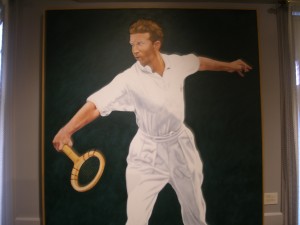
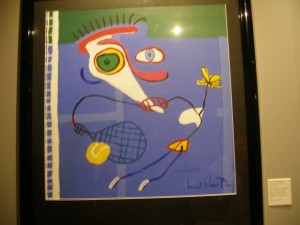
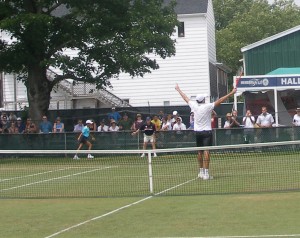

-

-

-

-

-

-

-

-

-

-

-

-

-

-

-

-

-

-

-

-

-

-

-

-

-

-

-

« Previous 1 2Steve · July 15, 2013 at 2:41 pm
Most intense tennis players Hewitt, Connors, Nadal.
Scoop Malinowski · July 15, 2013 at 3:21 pm
Dan, I don’t agree. It was a hot, intense, ferocious match. Hewitt felt the black linesman was getting caught up in the heat of the battle and tried to favor Blake. You can’t rule out the possibility that this is what happened. I remember hearing an old story Arthur Ashe was playing a match in Australia and an official called him for a footfault on MP, thus blowing the match for Ashe. From what I understood it was a famous story. That’s about the only story or example I have ever heard of white racism against a non white player. THE ONLY. I defy you to cite an example where a white official tried to cheat a non white player. It simply does not happen. In these times of political correctness, it would likely never happen.
Scoop Malinowski · July 15, 2013 at 3:23 pm
Hewitt won in five sets Steve. Blake got sick at the end. Great match. It was one of Blake’s first big breakout performances that showed he was an elite player in the making. It was the kind of match that even though he lost his stock went way up.
Scoop Malinowski · July 15, 2013 at 3:26 pm
Good research Andrew. Yes Dan and I will be at qualies again. Another thing about that Hewitt-Blake fued, a year or two later, maybe even three or four, Hewitt was playing on Ashe and CBS interviewer Tracy Wolfson interviewed Hewitt on court after the match, like Mary Jo does now, and she tried to blindside him by bringing up that Blake match controversy again. Total bush league, instigator move by Wolfson who did not return the following year to do those interviews. Hewitt handled the blindside attack well though. Respect to Hewitt.
Scoop Malinowski · July 15, 2013 at 3:27 pm
Add to most intense players list – Bartoli, Serena, Maria.
Andrew Miller · July 15, 2013 at 4:15 pm
Scoop – I agree – I think that’s kind of the point. Hewitt either was misinterpreted or made a huge, totally racist and outrageous mistake – and he completely apologized, for absolutely everything – perception, reality and what not, with the apology accepted from Blake. He went straight to Blake in the locker room and told him that he did not mean it and apologized basically for making a tough match even harder. Not to come to the defense of Hewitt – he can fight his own battles, but the crowd called him racist again before his 2002, five set Blake match at the US Open and this time it was James Blake addressing it with the crowd. He didn’t tap it to fuel him – he addressed it and dismissed it, for Hewitt.
I know Spadea was not pro-Blake, but I think that is pretty stand up by Blake to basically say to someone who says hey your opponent is a racist, to tell them you know nothing and the guy already settled up with me, maybe watch the match and set an example for your fellow crowd goers. That says a lot for Blake – we may say we always thought he was capable of going deeper at slams, but he certainly represented U.S. tennis in many other significant ways.
Greg Garber wrote about the Hewitt match here, http://www.jamesblaketennis.com/jb%20pages/media%20pages/media%2001us%20open.htm , and Blake discussed it, in a very, very thorough way (no one in the world gives longer interviews than Blake!), in his transcript here from the match http://www.asapsports.com/show_interview.php?id=3382 and briefly after he was chosen for Davis Cup here http://www.asapsports.com/show_interview.php?id=3380 and then here again before playing Hewitt again in 2002’s third round?, http://www.asapsports.com/show_interview.php?id=3347 . Then Hewitt before playing him in 2002, here http://www.asapsports.com/show_interview.php?id=21220 , and after, http://www.asapsports.com/show_interview.php?id=21219 .
You can say Hewitt was racist or not, but if it’s about that match a while back he’s more than made up for it to Blake ( though maybe not to the linesperson – Marion Johnson ) . If Michael Russell is trying to defend the linespeople from the players, now that might be a worthy cause!
Andrew Miller · July 15, 2013 at 4:22 pm
Or Hewitt’s publicist, who basically says Hewitt doesn’t believe Russell wrote it either.
“[David] Drysdale said: ”From our point of view it was surprising, very surprising, because Lleyton and Michael have always got on pretty well.
”Lleyton’s first comment was, ‘oh, someone else has written that’, and he didn’t seem too concerned by it. I don’t think Lleyton felt it came from Michael, but that’s the dangers of these Facebook pages and Twitter – if people aren’t controlling them themselves, this is what can happen.
Read more: http://www.theage.com.au/sport/tennis/russell-denies-racist-sledge-against-hewitt-20130715-2q095.html#ixzz2Z9COUGRk
and from CNNSI:
“|The Facebook post caused a firestorm of activity on Twitter, but the biggest news was not that the 35-year-old Russell may or may not have insulted Hewitt. The most shocking revelation in this whole mess is that the 81st-ranked Russell has a publicist.”
http://tennis.si.com/2013/07/15/michael-russell-facebook-rant-lleyton-hewitt/
Dan Markowitz · July 15, 2013 at 6:23 pm
Scoop, I wrote an article for The New York Times back in the 90’s, a big feature piece about racism in tennis. I’m not saying that William Washington, Mala vAi’s father, was the pillar of truth, but he did have three children all play on the pro tour and he sai the amount of racism in tennis was rampant, from blacks being put on far away practice courts, given bad practice balls and in the minor leagues at one tournament in the South, his daughter was shuttled to another club to play her match,
Think about it, is there racism in life in America today? There certainly is or the gap. Entwine white and black economic prowess would not be so large. So why wouldn’t there be prejudice on the tennis tour where the percentage of blacks in the game is much lower than in society?
I’m sure if you talked to the blacks in the game today from Sloane Stephens to Donald Young and at low levels, you’d hear their stories of racism, This isn’t as much a hot button issue in the Unite States today as it was in the 90’s because there are no great black athletes playing the game and at the breaking point of making a name for themselves. Back then you had the real image of Arthur Ashe effecting blacks in the game and you had a bevy of good to very good black players like Mala Vai, Bryan Shelton, Chip Hoover further back, Todd Nelson and Martin Blackmon.
Andrew Miller · July 15, 2013 at 7:50 pm
Assume there is racism in tennis. How is this relevant though since Hewitt apologized to Blake, Blake accepted the apology, and Blake then addressed it thoroughly in several press conferences over a two year period, well over 12 years ago?
Assuming racism again, it seems the offended parties, save the slighted linesperson ( Marion Johnson ) made amends a while back here. Everyone was embarassed by it – Hewitt, Blake, the tennis world, etc and then moved through it. If Russell didn’t even say anything (and his tweeting suggest innocence, who knows if he has a publicist!) then there is someone out to get Lleyton for who knows what. But if it is Russell (doesn’t seem like it) it certainly reflects poorly on him.
Dan Markowitz · July 15, 2013 at 9:57 pm
It is strange though that there are 2, count the 2, black men in the top 200 today. That’s amazing. The French have far fewer black people and there are three black Frencmanin Top 200. Where are the black men in American tennis.? I know there are fewer black men in baseball, too, but the USTA has to be looking for talent and develop it.
Andrew Miller · July 15, 2013 at 10:05 pm
I thought four? Donald Young; James Blake; Gael Monfils, Wil-j Tsonga.
Scoop Malinowski · July 15, 2013 at 10:35 pm
No, there is very very little if any racism in tennis. I have never seen it, never in the pro ranks nor in my local tennis life. In fact many black players (Yves, Ernie, Tom, Dan, Charles, etc.) have migrated over to our courts at Overpeck park now to mix in this us because they love playing with us. All of the people I have come across in tennis, both local and on the pro circuit are good fair decent people and I have never seen or heard of an example of blatant racism, well except maybe for what Israel did against the Polish players, Radwanska in Fed Cup, calling them an unspeakable anti Christian name. I do not see any racism in tennis, not saying it doesn’t exist but I don’t see it. The Williams sisters tried to whine about American fans not supporting them that much but that was total Bulljive nonsense. Players like Donald Young, Stevens, Keys, Mal Washington, Taylor Townsend have all been treated very fairly, if not more than fairly, if you consider the massive amount of Wildcards Young received.
Scoop Malinowski · July 15, 2013 at 10:39 pm
just remembered an Aussie young pro made a bad comment about a black player and got suspended, can’t remember the details. it was a couple of years ago.
Dan Markowitz · July 16, 2013 at 6:42 am
There’s certainly an economic prejudice in tennis. Both Young and Blake came from solid middle class families so they could afford the expense of junior tennis. But how many black aspiring players can’t afford $100 private lessons? Or their parents aren’t around to take the to junior lessons.
Once in a while, I splurge for a private lesson for my son. But the kids he competes against take two privates a week in addition to playin in two clinics a week. The cot for that is $15,000 a year and I’m not even counting tournament expense and the hours and gas money a parent puts in transporting his kid around.
Yes, there are Spadeas and Jarmere Jenkins, who’s father basically coached them, but they had competitive siblings. In my case, my son is an only child and he always says to me because we do it all the time, “It’s boring hitting against you, Dad.”
So I’m going to have my kid play baseball, soccer and basketball. Look at the cost differential, he made the travel soccer team and all I have to pony up for the Fall is $375 and he gets a uniform and they practice twice a week and play games on Saturdays.. My kid’s not black and I earn more than the average black man in this country, but when it comes to tennis, I’m dealing with a very difficult socioeconomic problem.
Dan Markowitz · July 16, 2013 at 6:51 am
By the way, do you think Russell fired his “publicist?” And best new name in tennis., Diego Sebastian Schwartzman.
Steve · July 16, 2013 at 7:32 am
Comedian Russell Peters has a funny bit on whites & racism. Cracks me up.
http://youtu.be/5dhjwWhlk5Q
I personally find in NJ we don’t do PC language too much. Many down to earth people in my great state.
Harold · July 16, 2013 at 7:52 am
Mal Washington’s dads letters to the Editor in the old TW, were legendary. Bitching about the unfair way wildcards were given out. His kids(other than Mal) got a few and never did anything to prove they deserved more. Saw Mashona play a few times in qualies at The Open,not a great player, nor did she have much of a following. The dad, fighting for his daughter, like any dad would, thought she should be main drawed all the time.
Scoop Malinowski · July 16, 2013 at 8:15 am
Dan there are a lot of talented athletic white kids who can’t afford tennis, same as there are a lot of black kids that can’t afford tennis. It’s unfortunate but that’s the way it is and the way it will always be.
Scoop Malinowski · July 16, 2013 at 8:17 am
LOL at anyone who believes Russell actually has or had a publicist. This was all Michael Russell IMO. I read the original post on Facebook and the original backtrack. After it got too hot, he had to come up with the scapegoat (the phantom publicist). Does anybody believe Donald Young or Bogomolov have publicists? COme on.
Scoop Malinowski · July 16, 2013 at 8:19 am
Did William Washington just give up? Or did he come to his senses?
Dan Markowitz · July 16, 2013 at 9:17 am
William Washington is just another tennis father considered crazy and unmanageable. There’s a who,e s,we of them including Vince’s dad, Jim Pierce, etc. The fact that he’s black and was fighting for his kids and he made seemingly outlandish comments, all that branded him as being crazy, but I don’t think he waa. look, when you’re black in tennis you almost always have to bring attention to yourself like Richard Williams or your kids get lost in the shuffle. what Williams did for his daughters the way they fulfilled his prophesies is the single most amazing feat in tennis bar none.
maybe the word I’m looking for instead of prejudice is intimidation. When you are one of a slim minority in the sport and you look different from everyone else and you usually can’t afford what everyone else in your milieu can afford, then there’s n intimidation factor. If anyone doesn’t think that impedes blacks and Hispanics from making it in tennis, I think they’re crazy.
I’ll give you an example from my experience as a basketball player. My junior year of high school I went to a basketball camp in Connecticut and was voted the Most valuable Player of the camp. There was this white counselor who played for the University of Connecticut and he knew Westchester County where I’m from and he said to me, “If you want to get really good so you can play college ball, you’ve got to take the bus to places like New Rochelle and Mt. Vernon Nd play in the playground against the black players.”
I thought about it, but I never did. I was intimidated to go down to those neighborhoods by myself and try to pick up games. I thought I they’d steal my ball and beat me up so I never went and I’ve always regretted that i didn’t go, but I was scared. In tennis, the white privileged kids probably won’t steal the black kids racquets or beat them up, but there other subtle moves they make that make a minority feel added pressure.
Scoop Malinowski · July 16, 2013 at 9:33 am
No not one single white kid in tennis would ever beat up or steal a black kids racquets. That would never happen. Listen, it’s all about winning in tennis. Not the color. You have to be able to play and win. Plenty of black hispanic and white kids don’t have the chance to play or excel in tennis because of the expenses. Young was on his way to making it very big but his parents wouldn’t let go and let him gain the tuition of a more experienced and practical coach.
Harold · July 16, 2013 at 10:29 am
Unfortunately for William Washington his only plan of action was to use the “race card”. There were better, higher ranked white kids that were not getting those wildcards either. He used to bitch about any older white player getting a wild card.
In any sport, you have to play against the best comp, to realize how good you are.
Little story, I thought I was a pretty good basketball player as a young teen, picked first in the park most times, played in school, traveling teams, even an appearance on the old Tonight Show with “The Whiz Kids”. Had dreams of playing college on up, until I saw Dean the Dream Meminger in a gym on the LES of Manhattan. Here was a guy that was considered the worst outside shooter in the NBA, he was standing there banging in 25 footers one after another, swish, same spot. Turned to my friend and told him the my dream is over
Andrew Miller · July 16, 2013 at 12:23 pm
This is a good discussion…I expect Dan and Scoop to produce a full feature on it for the New York Times! Why did Tim Neilly, Scoville Jenkins, Phil Simmonds really not break through? One was Kalmazoo champ (Scoville, got to #187), one was Orange Bowl champ from Bahamas (Neilly, got only to the 800s) and one was the top ITF junior doubles player (Simmonds, got to #219). Even alone on rankings they never got much higher than Scott Oudsema ( #255 ), or Brendan Evans ( #117 ), also both off (or still battling however much they can on) tour.
What does it say – are they in line with the other players, all struggling together with only the ones who stick it out like Kuznetsov keeping the fire lit with their resolve? Is it a lack of support from family and training – access to trainers, access to factors that other players have? Inability to improve? Lack of discipline? Poor environment?
I kind of suspect that it might be because their games flourished when the courts were a little faster, which favored the development of some big serving. When the game changed they didn’t have the exposure to the new courts or to the complete games of other players, and so were a bit doomed with the exception of two players: Donald Young and Alex Kuznetsov. Why were they even spared?
To me it’s because Kuznetsov was a French Open junior finalist who had some success on clay (courts became slower overall, not faster), and with Young because he not only has a complete game but an excellent feel for the game’s subtle aspects (drop shots, etc). In other words they were the only ones that COULD adapt, fast enough, to struggle but succeed in more ways than the rest of the U.S. field.
Then again, what does it say for tennis itself when a former junior champ, Yuki Bhambri from India, hasn’t himself got higher than #174 in the world at age 21 and is now around #400? Probably how strong the players are these days.
I think that’s the big question – is it because players are worse that they aren’t doing better? I’d think it’s the reality of competition that’s the biggest factor: the top 100 is quite a group of players. And even when you crack it you’re not safe.
Steve · July 16, 2013 at 12:33 pm
Scoop…Sunday is probably good if you’re around to play some doubles.
Andrew Miller · July 16, 2013 at 12:45 pm
Just saw the tape from Kudla vs. Harrison on the green clay. Kudla – great anticipation, fast, excellent groundstrokes, no hitches as far as I can tell, complete game, just as competitive as Harrison. Harrison – ultra competitive, relied on too much spin before he game to his senses, flattened out his forehand and backhand, and started to hit at the baseline rather than take the ball well behind the baseline. Staying behind the baseline killed Harrison, and using those spinny shots killed him too in a match that he could only win by pounding Kudla and then tiring him out.
I like Kudla’s game and demeanor. I’m thinking that we’re looking at Sock and Kudla as the heirs to Isner and Querrey. Kudla is very good, I think he hits the best ball out there, even showed some flashes of Rios-like strategy in his clay match with Harrison, and while out-thinking Harrison isn’t impossible, out-playing him is hard, and Kudla’s strategy combined with resolve on display was pretty impressive.
For what it’s worth I think Kudla is worth watching. Cheer for this kid – the most complete game from a U.S. player that I have seen since Donald Young. I think if you were to ask Davydenko who hits the best ball of the U.S. players, have to go with Kudla, the fundamentals are right there. Harrison can get his groove back if he goes for the flat ball, gets rid of that spinny stuff (only use it in a pinch), and starts to out-think the opponents.
The Kozlov kid too has great fundamentals, but I don’t want to jinx him at this young age.
dan markowitz · July 16, 2013 at 12:56 pm
By the way, here’s my 1991 article from the New York Times:
VIEWS OF SPORT; Charges of Racism Now a Tennis Problem
By DANIEL MARKOWITZ;
Daniel Markowitz, a freelance writer, teaches tennis to inner-city youths for the New York City Department of Parks and Recreation
Published: February 17, 1991
On the surface, last year marked a renaissance for American tennis.
But behind the headlines of the Davis Cup victory, the all-American men’s final at the United States Open and an all-American women’s final at Wimbledon, there were disturbing rumblings about racism in the game.
Last summer, Shoal Creek Country Club’s exclusionary membership practices flared into a national embarrassment for golf, forcing a new awareness of the way the pro tour conducted its business. Several blacks in the tennis community voiced frustration last summer that similar abuses had not led to commensurate changes in the policies, procedures and attitudes in the tennis establishment.
Arthur Ashe, the former Wimbledon and United States Open champion, said that administrators of the United States Tennis Association, whose mandate it is to promote the game and develop young talent, held “a latent fear” of black players’ potential. “They’re worried that if we made our mark, we’d take over the sport,” Ashe said. “They’re worried that we’d start producing tennis players like we have basketball players.”
William Washington, the father and coach of MaliVai, who at No. 97 in the official Association of Tennis Professionals world ranking is the top-ranked black American man, found fault with the U.S.T.A.’s training programs for inner-city black youngsters and its slack response to incidents of possible racism on the national junior circuit. “The U.S.T.A.’s answer to handling racism is to try and sweep it under the rug,” Washington said.
Although the reported incidents on the junior tennis circuit, which includes four divisions for players 18 years old and under, happened between three and 10 years ago, the charges of institutional racism in pro tennis are current and, according to several black players, have been happening for years. These charges are in many cases subjective and unprovable, involving the assignment of less desirable practice times, courts and balls, and the pairing of black opponents against each other in the early rounds of tournaments, but in the light of Shoal Creek they deserve thought and attention.
U.S.T.A. officials dispute charges of racism and defend the organization’s recent record in involving minority players in its programs. “What Arthur said flies against the facts of the matter, and I don’t think he thought it out,” said David Markin, the association’s president. “The U.S.T.A. is color blind when it comes to trying to bring minorities into the sport of tennis. We’ve tried to involve many other minorities as well, Chinese and Japanese and Hispanics.”
Recent U.S.T.A. initiatives, however, are partly a response to past neglect. “In a study we did in 1988,” said Ron Woods, the director of the association’s player development program, “we found that the average national junior player came from a family that was making $80,000. Our main goal was to get more kids from every background playing tennis and to keep them playing. But, indirectly, we were trying to address racial inequities from the past.”
One case in point involves Bryan Shelton, No. 121 in the world and second among American black players, who tells a story of country club racism that predates Shoal Creek by 10 years. “I entered a junior tournament at the Vestavia Country Club,” said the 24-year-old Shelton, referring to a club in Birmingham, Ala. “Going into the tournament, the officials there didn’t know who I was. Then, I ended up winning it.
“The next year they changed it to an invitation-only tournament, and I didn’t receive an invitation. It turned into a big deal, not just with me, but with other players — not just black, either — who rallied behind me. Vestavia ended up losing their Southern Tennis Association sanction the following year. But they eventually got it back.”
In October 1988, William Washington brought his grievances against the U.S.T.A. to a Congressional subcommittee on employment opportunity. He charged that his younger son, Mashiska, was unfairly denied access to playing in the U.S.T.A. National Indoor 14-and-under tournament in 1988 as a representative of the Western Tennis Association (the Western and Southern associations are two of 17 U.S.T.A. sections in the nation). Mashiska’s No. 4 ranking in the region should have reserved him a spot in the tournament, but a Western spokesman said his application arrived late. Washington also questioned the U.S.T.A.’s handling of a previous national tournament in 1981 held in Birmingham, Ala., where his daughter, Michaela, was bused across town to a different club to play her matches.
“The U.S.T.A. is not divined to help minority kids,” Washington said this summer. Washington made his statements even though MaliVai is a member of the U.S.T.A.’s Touring Pro Team, which provides coaching and assists young players in making the transition to the demands of the pro tour.
“When talking about Mr. Washington, you have to realize that he has had many years of acrimonious dealings with the U.S.T.A.,” Markin said. “For as long as I have known him, Mr. Washington has always been angry. Anytime something has gone wrong regarding the U.S.T.A. and his kids — and like any large organization, we’ve had our administrative foulups — he’s charged it was racism. As intelligent a man and as fine a coach as he is, Mr. Washington would be a large help to the U.S.T.A. if he worked with us instead of branding us racists.”
Benny Sims, who is black and a national coach with the U.S.T.A., defends the player development program, which the U.S.T.A. initiated in the spring of 1988. A lot of the grievances that are being made date back to before the development program started, Sims said. “At that time, the U.S.T.A. was a broad-based organization whose primary concern was to introduce tennis to as many youngsters as possible. Now it’s more specialized,” he said.
The U.S.T.A. points out that Chanda Rubin, a 14-year-old from Louisiana who is black, is a member of the 18-player national team, and three blacks are members of the 12-player touring pro program: Stacey Martin, Jeri Ingram and MaliVai Washington. Of the 12 black players in the top 100 in the national junior rankings, 8 attended the association’s developmental camps.
Still, Sims said, “The people who are going to have to assume the responsibility for building black players are black parents and coaches.”
On the pro tours, many black players are aware of an undercurrent of racial tension. Some choose to acknowledge it, while others say it never comes to mind.
“Most of the racism I’ve encountered is under the surface,” said Todd Nelson, who is 29 years old and once held a world ranking of 56, but is now No. 489. “If you’re looking for it, you feel it. It’s there in the scheduling of matches, the practice court time and the balls you’re given. But if I get a bad break on the court — like a bad line call — I don’t think it’s because I’m black.”
Kenneth Lee, 22, who plays in the minor satellite tournaments beneath the A.T.P. main tour, accused tournament officials of pairing blacks against one another in early rounds so they would knock each other out.
“A lot of us meet in the early rounds,” Lee said. “There are around 11 black men playing on the world circuit and they always seem to be playing each other. Statistically, it doesn’t seem right.”
Lee seems alone in his contention, but other black players mentioned the cultural wear and tear of traveling and competing on a tour dominated by white players and white fans.
“If you grow up listening to rap or African music, it’s going to take some time to adjust to hearing country music,” said Yannick Noah, the African-born Frenchman who once was the No. 3-ranked player in the world and has since slipped to No. 142. “I don’t want it to be taken that you have to live in a white way if you’re black. But there is something in there that needs to be thought about.”
“Every week people come up to me at tournaments and call me Shelton or MaliVai,” Nelson said. “I don’t even look like those guys. I see this as being a small bit of racism. It’s discouraging. The fans aren’t looking to see the person. Fans don’t go up to Chinese players and ask for Michael Chang’s autograph or they don’t go up to white players and ask for John McEnroe’s.”
Then there was the struggle of Zina Garrison, now the No. 10 player in the world, to attain racquet and clothing endorsements. These deals are considered a given for a top-10 player, but Garrison couldn’t find a contract until she became the first black woman since Althea Gibson in 1958 to reach the Wimbledon final last year. Then Reebok signed her.
“Zina just didn’t match the Madison Avenue paradigm of the cute blonde,” Ashe said.
Some of the black pros’ frustration has spilled over onto one another, a detrimental byproduct of battling perceived racism. Last summer, Lee and Nelson suggested that MaliVai Washington had distanced himself from other black players on the tour by working with U.S.T.A. coaches. And Nelson lashed out at Ashe.
“There’s a negative feedback coming from Ashe,” said Nelson. “Personally, I don’t think he’s helping young black players by saying to them, ‘Stay in school. Get your education,’ and then he raves about the newest white teen-age sensation. Maybe he feels he’s better than us because he had it tougher and he made it to a very high echelon of the game.”
“I don’t try to compare what happened to me with what happens to them,” Ashe said. “When I started there were legal barriers. I knew that the world wouldn’t do me any favors, that it didn’t like me, that it would barely tolerate me.
“If they want to throw away college to be the next McEnroe, I’m not going to be a party to it.”
It is not surprising that racial accord is elusive in a sport that, once solely the bastion of the country club set, is now openly played by members of minority groups on city courts.
As Sims said, “Tennis is just a microcosm of life.”
But if the United States hopes to remain at the top of the game, it seems certain that more black players, like J. J. Jackson and Chanda Rubin, who were No. 1 in the national boys’ and girls’ 14-and-under rankings in 1989 — the first time in history that two blacks held the top spot in the same year in the U.S.T.A. junior rankings — will need to emerge.